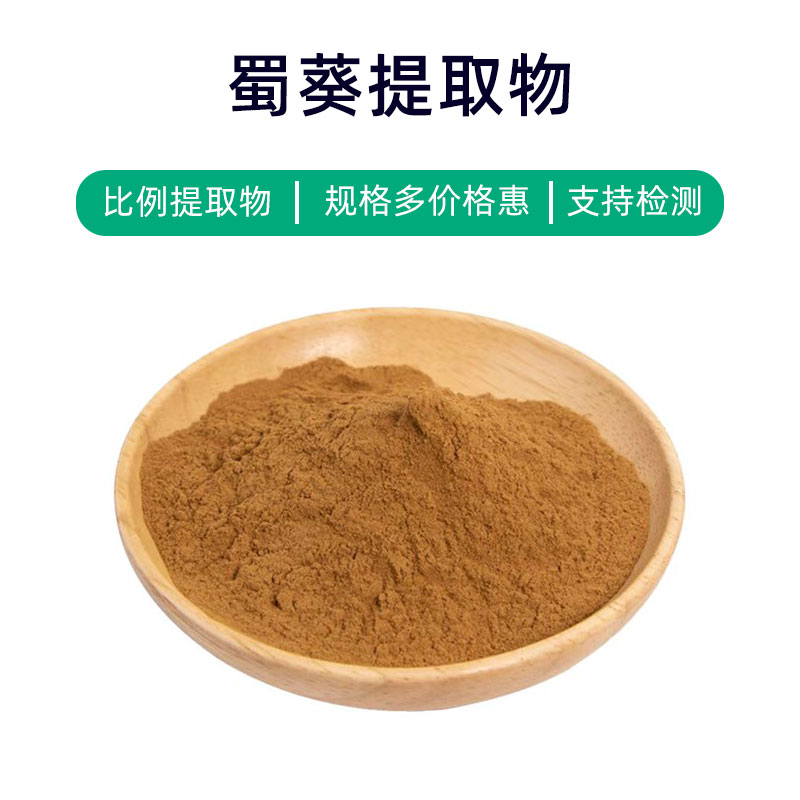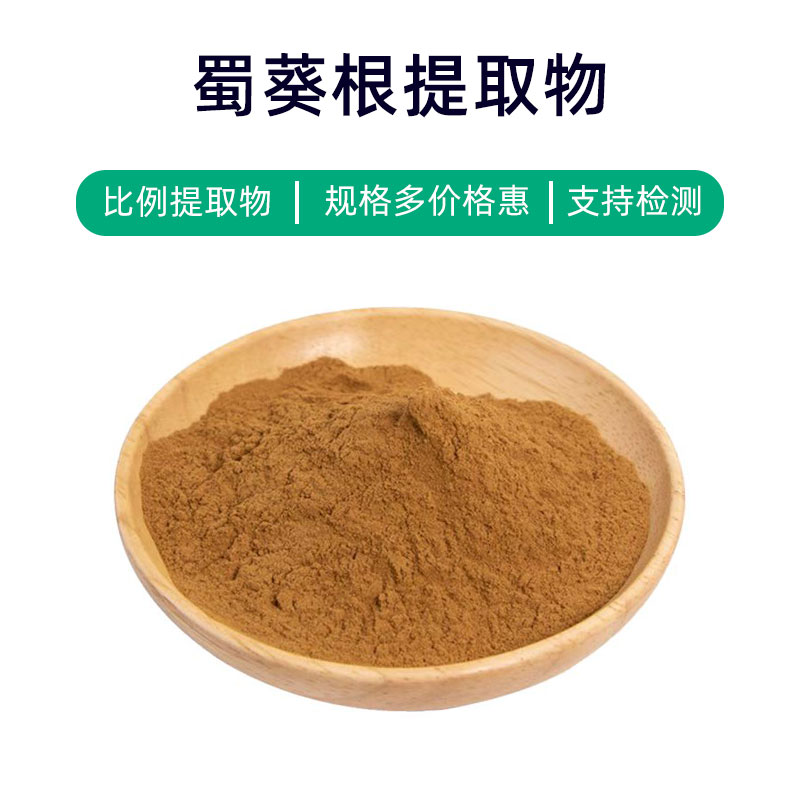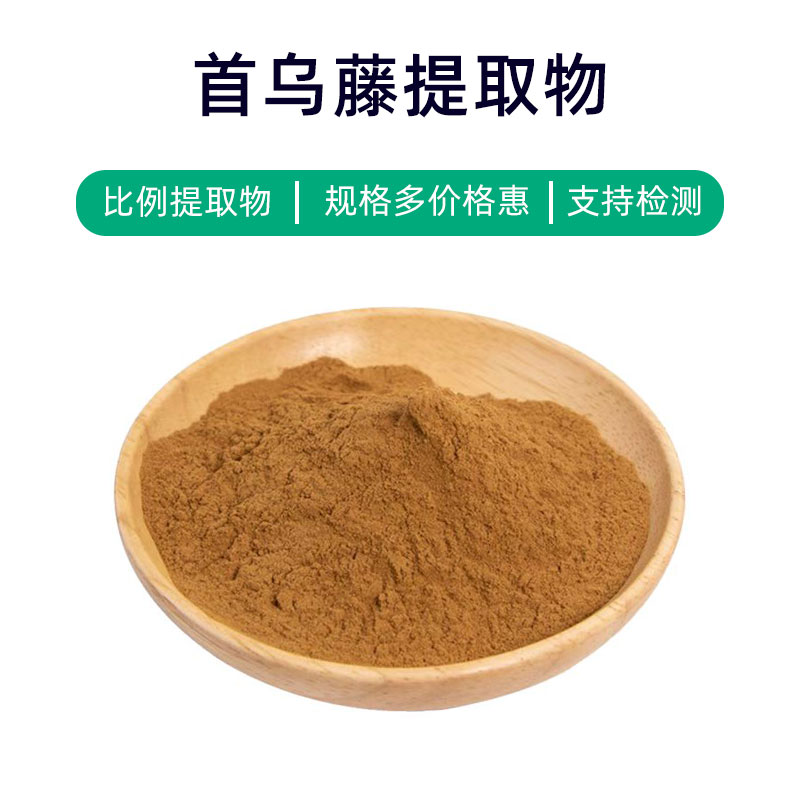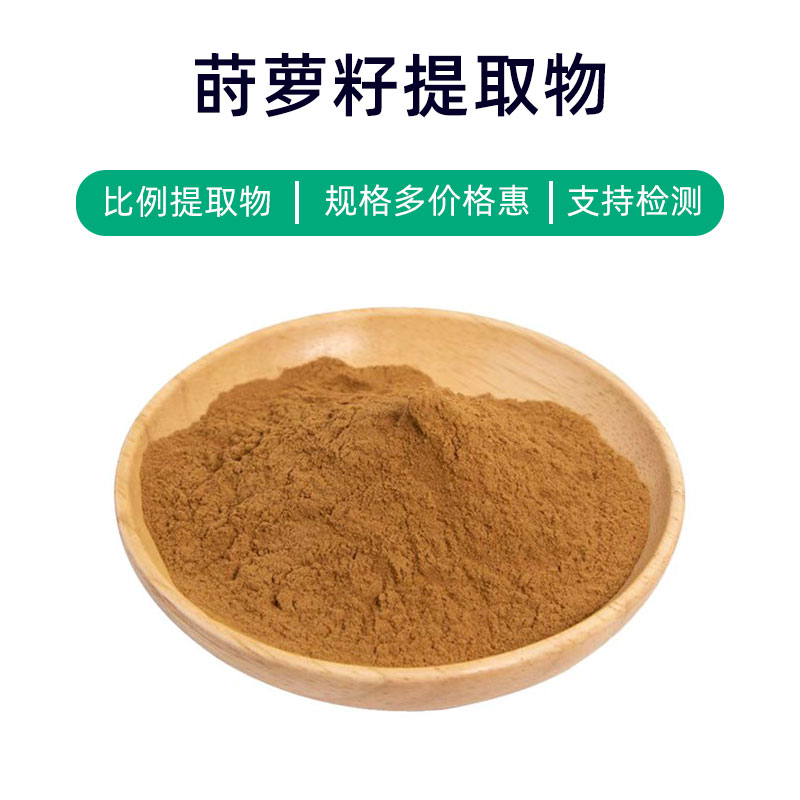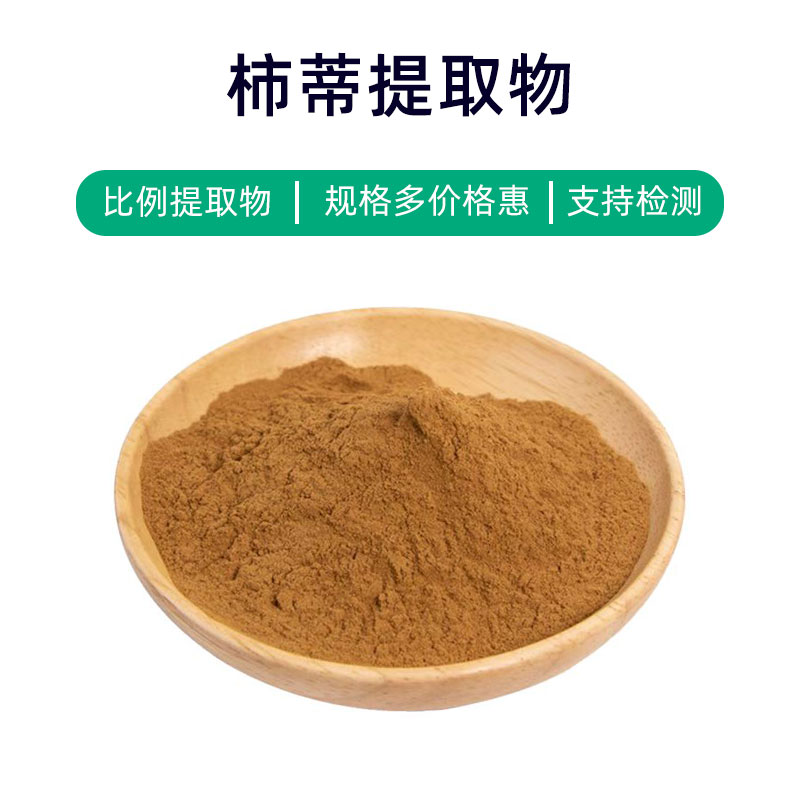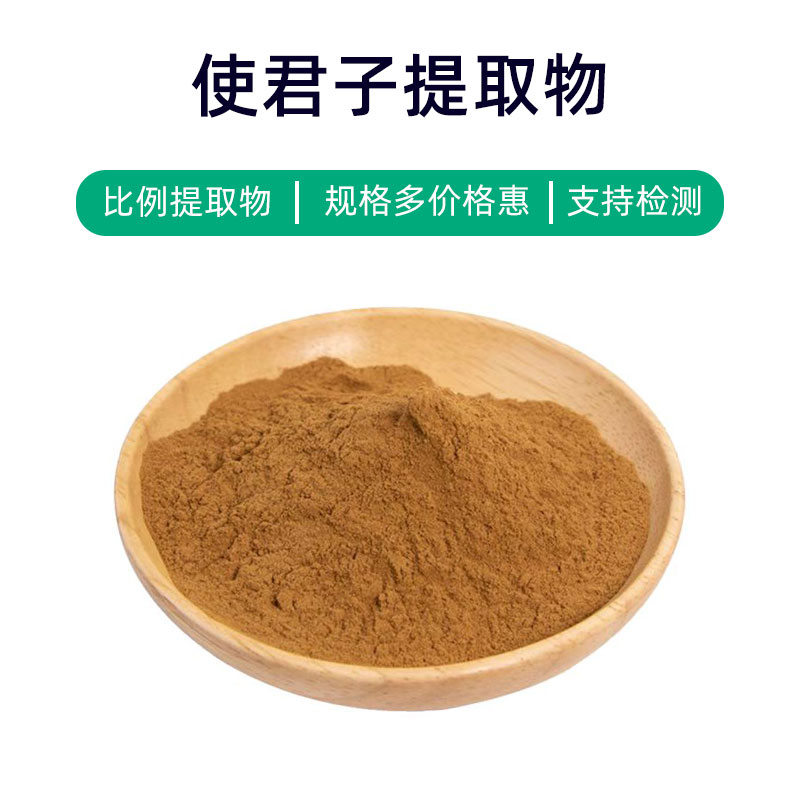Mulberry Twig Extract Product Introduction
Mulberry twig extract is a natural plant extract derived from the branches and young twigs of the mulberry tree (Morus alba). Its main components include polyphenols, flavonoids, and Vitamin C, which provide antioxidant, anti-inflammatory, and anti-aging properties.
Mulberry twig extract is widely used in dietary supplements, pharmaceuticals, and cosmetics. In dietary supplements, it is believed to enhance immunity, improve blood circulation, and help regulate blood sugar and lipid levels. It is also frequently included in medications to treat diseases such as arthritis, hypertension, and hyperlipidemia. Additionally, in cosmetics, mulberry twig extract is valued for its antioxidant and anti-aging characteristics, benefiting skincare products, masks, and anti-wrinkle creams by improving skin texture, reducing wrinkles, and enhancing skin glow.
Overall, as a natural plant extract, mulberry twig extract offers various health benefits and is suitable for manufacturing products across different fields.
Mulberry Twig Extract Production Process
The production process of mulberry twig extract typically includes the following steps:
- Raw Material Preparation: Select high-quality mulberry branches and young twigs as extraction materials, ensuring they are fresh and clean.
- Washing: Clean the collected mulberry branches and young twigs to remove surface impurities and dirt.
- Crushing and Grinding: Crush and grind the cleaned mulberry branches and twigs to increase extraction efficiency and surface area.
- Solvent Extraction: Use appropriate solvents (such as ethanol or water) to extract the active components from the crushed mulberry branches and twigs.
- Filtration and Concentration: Filter the extract to remove residues, then concentrate it to enhance the concentration of active ingredients.
- Evaporation and Drying: Evaporate and dry the concentrated extract to obtain powdered mulberry twig extract.
- Crushing and Grading: Crush and grade the resulting mulberry extract powder to ensure product uniformity and stability.
- Packaging and Storage: Finally, package the processed mulberry twig extract, taking appropriate storage measures to ensure its quality and stability.
This production process ensures high-quality mulberry twig extract for use in various medical, dietary, and cosmetic applications.
Effects and Side Effects of Mulberry Twig Extract
Mulberry twig extract, derived from the branches of the mulberry tree, possesses multiple effects and benefits, including:
- Antioxidant Effects: Rich in natural antioxidants such as polyphenols and flavonoids, mulberry twig extract helps eliminate free radicals, protecting cells from oxidative damage and slowing down the aging process.
- Blood Sugar Regulation: Studies indicate that certain active components in mulberry twig extract help lower blood sugar levels, aiding in the control of diabetes and related conditions.
- Lipid Reduction: Some constituents in mulberry twig extract help lower cholesterol and triglyceride levels in the blood, contributing to the prevention of cardiovascular diseases.
- Anti-Inflammatory Effects: Contains several anti-inflammatory compounds that can inhibit inflammatory responses and alleviate symptoms, offering auxiliary treatment for conditions like rheumatoid arthritis and inflammatory bowel disease.
- Immune Boosting: Certain active ingredients in mulberry twig extract enhance immune function, strengthening the body's defenses against infections and illnesses.
- Tumor Suppression: Some research suggests that certain components in mulberry twig extract may inhibit tumor growth, suppressing cancer cell proliferation and metastasis.
- Improving Sleep: Contains calming components that can help regulate the nervous system's functions, alleviating anxiety and tension, and improving sleep quality.
Despite its many benefits, individual differences and dosage considerations should be noted. Long-term or high-dose use may cause some side effects, such as digestive discomfort or allergic reactions. It is advisable to consult with a healthcare professional before use to avoid adverse effects.
Applications and Dosage of Mulberry Twig Extract
Mulberry twig extract is widely applied in pharmaceuticals, food, and cosmetics, with doses varying by application.
- Medical Applications:
- Blood Sugar Regulation: Used in traditional medicine to treat diabetes and issues with blood sugar stability. The common dosage is 3-6 grams daily, taken in divided doses.
- Anti-Inflammatory and Swelling Reduction: In traditional medicine, it is used for conditions like rheumatoid arthritis and inflammatory bowel disease. Dosage forms include oral preparations and topical patches, adjusted according to medical advice.
- Food Applications:
- Nutritional Supplements: Added to various health supplements to enhance immunity and sleep quality. Typical dosage is 500-1000 milligrams daily, adjustable as needed.
- Flavoring Agent: Utilized in some functional foods as a natural flavoring agent, providing unique flavors and nutritional benefits.
- Cosmetic Applications:
- Skincare Products: Rich in antioxidants, commonly used in skincare formulations for anti-aging, whitening, and moisturizing benefits. Dosage varies by product formulation, typically following the manufacturer's instructions.
- Hair Care Products: Added to shampoos and conditioners to cleanse the scalp and promote hair growth. General usage is to apply an appropriate amount to hair and scalp, massage, and rinse.
It's essential to note that specific usage and dosage may differ by product type, and users should read product labels or consult professionals for guidance. Additionally, individual differences and allergic reactions should be monitored, with any discomfort leading to prompt cessation of use and medical attention if necessary.
Plant Source of Mulberry Twig Extract: Distribution and Growth Environment
The source plant for mulberry twig extract is the mulberry tree (genus: Morus), a member of the Moraceae family, mainly distributed across Asia, Europe, and North America. Here’s an overview of the mulberry tree, its distribution, and growth environment:
- Mulberry Tree Overview:
- Scientific Name: Morus
- Belongs to the Moraceae family, it is a deciduous tree or shrub typically ranging from 5 to 20 meters tall.
- The mulberry tree has broad applications; beyond being an extraction source, its fruit is edible, and its bark and leaves are used in traditional medicine and as food additives.
- Distribution:
- Asia: Originating from China, the mulberry tree is crucial to traditional sericulture and is cultivated widely across countries like Japan, South Korea, and India.
- Europe: Also found widely in Europe, especially along the Mediterranean coast in countries like Italy and Greece.
- North America: In North America, mulberry trees grow primarily in regions of the United States and Canada.
- Growth Environment:
- Climate: Prefers warm, humid climates and has specific temperature and humidity requirements, with optimal growth temperatures between 15-30 degrees Celsius.
- Soil: Mulberry trees are not picky about soil type and can tolerate poor conditions, though they thrive in well-drained soils with a pH of 6-8.
- Elevation: Adaptable to a range of elevations, typically growing well between 500 and 2000 meters above sea level.
- Cultivation and Wild Growth:
- Cultivation: Easy to cultivate through cuttings or seeds, growing rapidly, making it suitable for orchards, farmland, or home gardens.
- Wild: In addition to cultivation, mulberry trees are often found in wild environments such as mountains, riverbanks, and roadsides, with some variations in quality but still valuable for extraction.
In summary, the mulberry tree is a resilient, widely distributed plant, with its growth environment primarily influenced by climate, soil, and elevation factors. Both cultivated and wild varieties provide ample resources for the production of mulberry twig extract.
Processing and Storage of Mulberry Twig Extract
The processing and storage of mulberry twig extract are crucial to ensuring its quality and stability.
The processing steps include:
- Collection and Initial Processing: Collect fresh mulberry twigs, followed by washing to remove impurities and surface dirt.
- Extraction Process: Crush or chop the cleaned twigs and use a suitable extraction agent, with common methods including water extraction and alcohol extraction.
- Filtration and Concentration: Filter the extract to eliminate solid residues, then use concentration equipment to achieve the desired extract concentration.
- Drying: Finally, dry the concentrated extract to remove moisture, resulting in a dry mulberry twig extract.
Storage Precautions:
- Avoid Direct Sunlight: Store mulberry twig extract in a cool, dry, and well-ventilated area, protecting it from direct sunlight to prevent oxidation and degradation of light-sensitive components.
- Moisture Prevention: Protect against moisture ingress during storage, potentially using sealed containers or packaging materials to maintain dryness.
- Stable Temperature: Maintaining a stable temperature helps prolong the shelf life of mulberry twig extract, avoiding environments with significant temperature fluctuations.
- Regular Inspections: Periodically check the appearance and texture of the extract, and address any abnormal changes or odors immediately to ensure product quality.
Proper processing and storage methods help retain the active components and stability of mulberry twig extract, extending its shelf life and ensuring product quality and effectiveness.
Monica Sun is a seasoned expert in the plant extraction industry with over a decade of experience in research and production. She specializes in the extraction and purification of plant active ingredients, focusing on driving innovation in natural product applications. Monica has participated in the development of multiple functional plant extracts, delivering high-value natural raw material solutions for the health food, pharmaceutical, and dietary supplement sectors.









